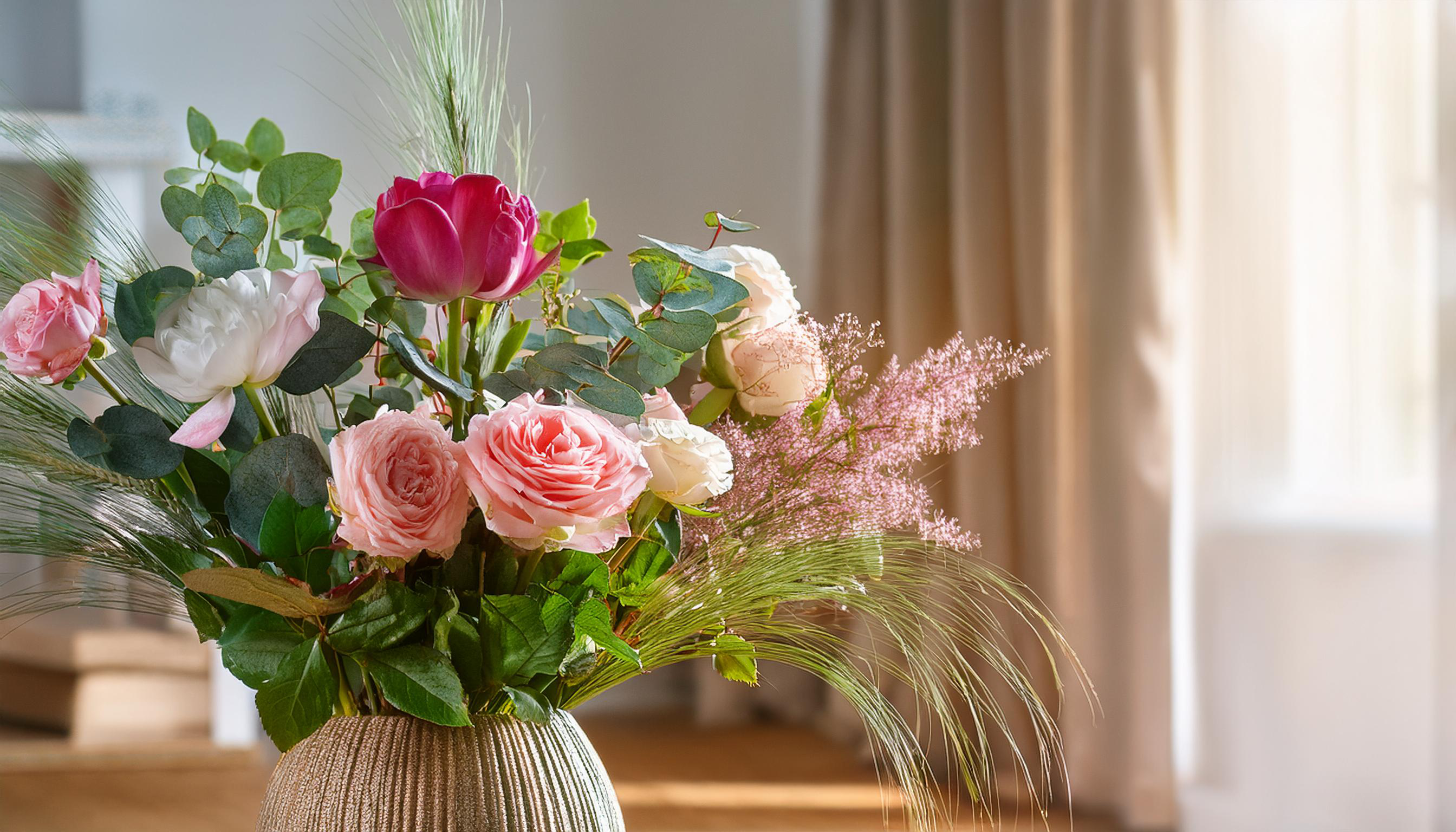
The 7 Techniques of Floral Design
By Susanne Kane
Floral design is the art of creating beautiful arrangements that convey meaning and emotion using flowers, leaves, ornaments, etc. Like any form of art, floral design requires the combination of certain technical knowledge combined with expressive creativity and living floral elements.
Floral designers use 7 techniques to consider their creations as they are designing and once they are done. The key aspects you need to consider are:
1. Proportion
Proportion is the relationship between the sizes of all the elements used to create a design, such as flowers, foliage, the container, and the accessories.
2. Scale
Scale is the relationship between the overall size of your floral design and its setting. For example, how a table centerpiece fits the table size, shape and setting. As far as floral arrangements in their vessel, the arrangement should be 1.5 to two times as big as the height or width of their container. These proportions help balance your designs.
3. Harmony
In floral design, harmony is the pleasing combination of materials, colors, and textures. Harmony is achieved when all the elements of an arrangement go nicely together and are suitable for the purpose of the design.
4. Unity
Unity is achieved when all of the principles and design elements have been included and are well-executed. In this case, the whole is more important than its individual parts.
5. Rhythm
This is the visual flow, the direction of your gaze when you look at the arrangement. Rhythm is what invites you to move your eyes across the design, from the focal point to the edges and back again. Rhythm also gives your design movement and holds the viewer's attention. It's created by positioning the colors, shapes, lines, textures, and spaces.
6. Balance
There are two types of balance in floral design: physical and visual.
- Physical balance is the distribution of the materials and, therefore, the weight of an arrangement. It may seem simple at first, but heavy blooms and foliage sometimes need a lot of care and attention. Your goal is always to make sure the arrangement stays upright and doesn't fall.
- Visual balance is about whether (or not) your design looks perfectly poised at first glance. There are three types of visual balance: symmetrical, asymmetrical, and open. The first two are the most traditional. Open balance is harder to achieve as it is more dependent on artistic experience and technical expertise.
7. Focal Point
Most floral designs have an area with more emphasis, known as the focal point. This is the main feature of the design. It attracts the viewer's gaze. You can create this emphasis using dominant or contrasting materials, for example, one-off stems or a mini-group. Then generate contrast between the focal point and the rest of your design using size, color, or texture.
For all budding floral designers, this all takes time, education and practice! Don't hesitate to buy some flowers and take a spin with these principles!